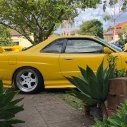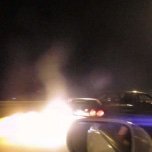Aftermarket BOV, performance or wank factor
Announcements
-
Similar Content
-
Latest Posts
-
Did a little bit this afternoon and pulled the dump and turbo off so I could take the mani off to clean it up and give it a few coats of paint. Wire wheeled what I could get to and then got the sand paper out to get the tight spots. Gave it one coat so far, will do another two tomorrow and see if I can fit it in the oven to bake it for an hour along with the adapter and dbw. Hoping the exhaust wrap I ordered turns up soon so I can wrap the dump and screamer. Ordered 30M so I'll wrap back as far as I can to help a little with temp next to the box and also the floorpan.
-
Yeah I think overall I’m running the expected power I should be running for now and I’ll just enjoy it for the time being until I get some other parts. Thanks for the advice mate I appreciate it!
-
By Murray_Calavera · Posted
That's fair enough. Might be time to just enjoy what you have until you sort the ecu/flex sensor situation. You can pretty much guarantee that you are knock limited and e85 is going to be the solution to more power. -
He didn’t provide that info to me but I think I’m on standard timing. And no we don’t have e85 on the petrol stations here but it’s widely available here from shops. I’m just planning on getting a better ecu before switching to e85
-
Seems bang on to me , g30-900 will make 900 crank on e85(on paper). Deduct ~25% for 98 and you are at 675 crank. Run that to the wheels and fact you are only running 26psi you end up about your number. People forget how magic E85 is now that just about everyone is running it. "Back in the day" you had to be north of 30psi on a 850+hp turbo to get 600 at the wheels on 98.
-








Recommended Posts
Create an account or sign in to comment
You need to be a member in order to leave a comment
Create an account
Sign up for a new account in our community. It's easy!
Register a new accountSign in
Already have an account? Sign in here.
Sign In Now